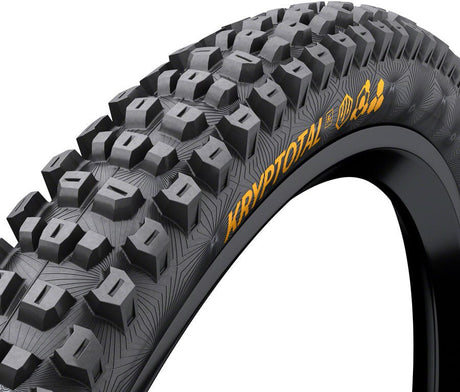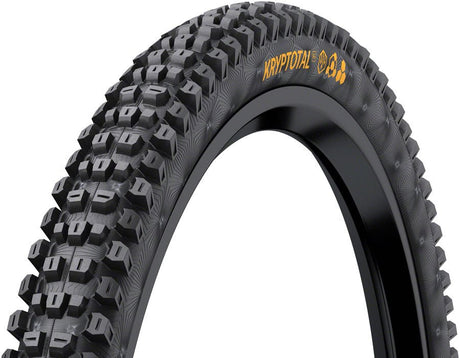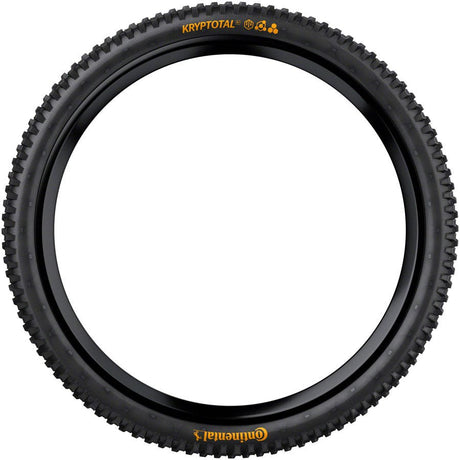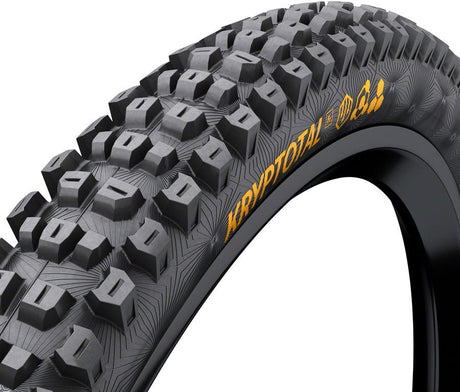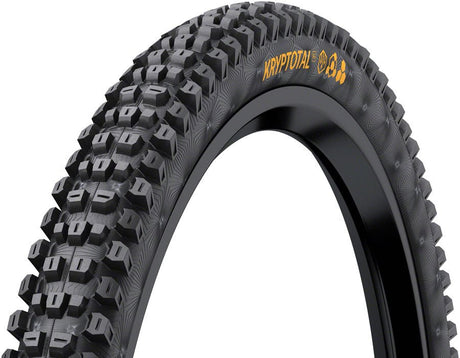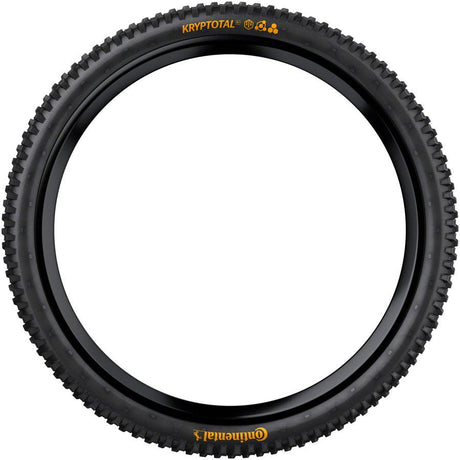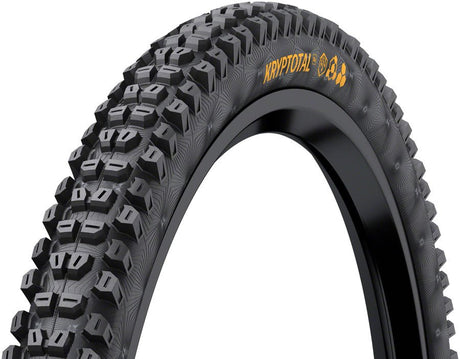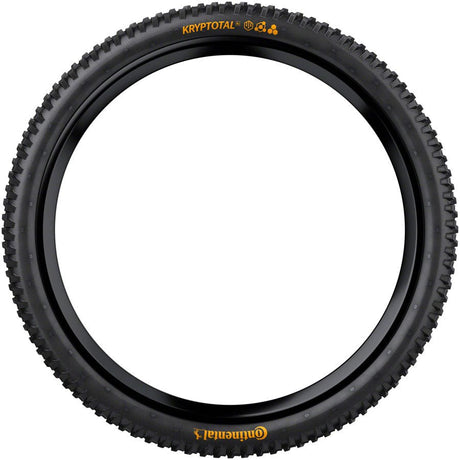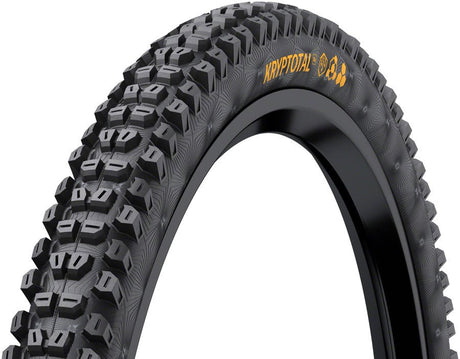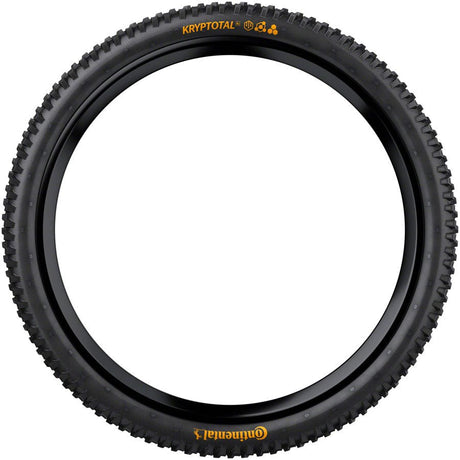Continental are a relative newcomer to the mountain bike tire world, but have made a big splash with their latest and greatest lineup of fresh tread patterns, rubber compounds, and casings. These are the hottest tires on the market right now, stealing some of the limelight from Maxxis and Schwalbe, with some of the fastest racers in the world putting up some incredibly impressive results on this rubber. At the first Downhill World Cup race of this season, Contintal tires made their way to the top of two of the four podiums, proving that they’re the real deal! The only problem is now we’ve got all new tread patterns to learn, and they aren’t the easiest to dissect, so we’ve done the ground work for you to explain everything there is to know about Continental’s freshest rubber options.
As a gravity focused shop, we’re going to focus on their gravity oriented tires, but they’ve also got some less aggressive cross country and trail tires if that’s your jam. Our jam are their five most aggressive and grippy tires, the Kyrptotal Front, Kryptotal Rear, Xenotal, Argotal, and Hydrotal. There’s obviously a theme with the names, but I can’t quite put my finger on what they’re going for. Are these planets? Prescription drugs? Progressive baby names? Power rangers? Your guess is as good as mine, but these five tires do a good job covering all the bases, with options for front tires, rear tires, and everything from soaking wet to bone dry conditions. For casing and rubber options, Continental has three of each, and your casing options are Trail, Enduro, and Downhill. The casings are pretty much exactly what they say on the tin, and are made for the disciplines of riding they’re labeled with.
Just like the casings, the rubber compounds are also quite self explanatory, with Endurance, Soft, and SuperSoft. Unsurprisingly, the Endurance compound is a harder rubber that will last the longest but offer the least grip, the SuperSoft compound is a softer rubber that offers the most grip but wear the fastest, and the Soft compound is somewhere in the middle. Choosing the right balance of tread pattern, rubber compound, and casing can be trickier than choosing where to start at an all you can eat buffet, so first let’s explain what you can expect from each of these tread patterns.
- 3 layers of carcass material under the tread for robustness and puncture protection
- 2 layers of carcass material for suppleness and adaptivity
- Foldable Aramid Bead
- Tubeless ready bead design for improved sealing
- Outstanding sidewall design with unique and distinctive look
- Label design with clear and intuitive symbol approach
- Cross woven fabric to prevent cuts and slashes
- 3 layers of carcass material under the tread for robustness and puncture protection
- 2 layers of carcass material for suppleness and adaptivity
- Apex for increased snake-bite robustness and support
- Foldable Aramid Bead
- Tubeless ready bead design for improved sealing
- Outstanding sidewall design with unique and distinctive look
- Label design with clear and intuitive symbol approach
- Cross woven fabric to prevent cuts and slashes
- 6 layers of carcass material under the tread for robustness and puncture protection
- 4 layers of carcass material for suppleness and adaptivity
- Apex for increased snake-bite robustness and support
- Foldable Aramid Bead
- Tubeless ready bead design for improved sealing
- Outstanding sidewall design with unique and distinctive look
- Label design with clear and intuitive symbol approach
- Cross woven chafer textile protects the tire and rim area
Spec Choices
At the time of writing this, not all of the combinations of casings and rubber compounds are available, and Continental has done their best to pick and choose which combinations would be the most popular and stuck with those. I could definitely see this changing in the future as they become more popular tires and it makes sense to expand their range of offerings, but for now, there are just four options, all of which are offered in 27.5” and 29”:
Trail casing with Endurance rubber
This combination is Continental’s most affordable option, with the lightest casing and hardest rubber. For lighter riders or those not looking for maximum performance, then these tires will give a similar performance to a EXO casing and MaxxSpeed Maxxis tire. If getting an affordable tire with a high quality tread pattern is your main priority, or you want the lightest tires for an easy climb to the top of the hill then these tires are your best bet! But if you’re looking for a high performance tire on the way down the hill, we would recommend reading further.
Enduro casing with Soft rubber
Stepping up in both support and grip, the Enduro casing with the Soft rubber Continental tires are a great option for anyone who wants a balance between climbing efficiency and downhill performance. If your local trail systems are long climbs and long descents, you’ll appreciate the efficiency of these tires compared to their more downhill oriented options, and the Soft rubber offers plenty of grip for most riders, especially if you’re not racing the clock. Compared to a Maxxis tire, these offer similar performance to an EXO+ tire with the MaxxTerra rubber compound.
Downhill casing with Soft rubber
Now looking at Continental’s most supportive casing, the Downhill casing is built to take hits but isn’t going to be the fastest on the way up the hill. Be prepared for this tire to be noticeably heavier than the Enduro casing, and you’ll be moving a bit slower up the hill, but the downhill performance is very impressive with these casings. Compared to a Maxxis, this casing sits somewhere between a Double Down and a Downhill casing, with that same Soft rubber that’s similar to MaxxTerra. With the thicker casings, you’ll flat less often, be able to run lower pressures, and get more grip than with the other options. Anyone who’s interested in going as fast as possible down the trail and is either taking a lift to the top or isn’t too worried about taking a little longer on the climbs shouldn’t look at any other options, except maybe the next contender.
Downhill casing with Super Soft rubber
The highest performing combination from Continental is their Downhill casing with the Super Soft rubber. With these tires you’ll feel like a fly on fly paper while ripping through off cambers and loose sections with confidence. With the same stable casing as the previous spec tire and a stickier rubber, this is my personal favorite from the bunch, and the Super Soft rubber is pretty comparable to the Maxxis MaxxGrip compound. This is the only way to get your hands on the incredibly sticky Super Soft rubber, and it makes sense, as those looking for the most grip are definitely going to need all the support they can get from a tire.
Kryptotal Front
Just like the name suggests, the Kryptotal Front is optimized around being a front tire, with tightly packed knobs to handle leaning over and finding grip in all kinds of conditions. Not only are there plenty of knobs, but they’re tall, squared off, and confidence inspiring when peering over your cockpit. With ramped knobs running down the center and well supported side knobs, this tire aims to give maximum stability and predictability over mixed terrain.
When compared to the Maxxis Assegai, this tire has a very similar 3 2 knob pattern going down the center, with slightly more between each row of knobs. Those center knobs are slightly larger than those found on the Assegai, and about the same height. Flanking the center knobs are uniform side knobs, while the Assegai has an alternating pattern of side knobs.
The Kryptotal Front is only made in a 2.4” width for all three spec options. You can choose between Trail casing/Endurance rubber, Enduro casing/Soft rubber, and Downhill casing/Super Soft rubber.
Kryptotal Rear
Believe it or not, the Kryptotal Rear is a rear specific tire, and designed to be used paired with the Kryptotal Front. With blockier center knobs and similar side knobs to the Kryptotal Front, the Kryptotal Rear aims to give increased braking traction over mixed terrain. The center knobs are a bit less ramped to really bite in during hard braking, but the slight ramp gives them increased rolling speed and efficiency. The side knobs are identical to those found on the Kryptotal Front, with sharp edges ready to bite into the trail.
Compared to the Maxxis DHR II, a staple aggressive rear tire from the tire superpower, the Kryptotal Rear slightly less tightly packed knobs, but a similar layout and knob height. The uniform corner knobs are another difference compared to the alternating side knob pattern on the DHR II.
With some of the most options of any of Continental’s tires, you can get the Kryptotal Rear in any of the four casing and rubber combinations in either 27.5” or 29” and 2.4” width, and you can also get the Kryptotal rear in a 2.6” width in both the Trail casing/Endurance rubber and Enduro casing/Soft rubber.
Xynotal
Built for hardpack and dry conditions, the Xynotal takes a lot of inspiration from the Kyrptotal Front, with an almost identical knob layout that makes the two tires hard to distinguish at first glance. A closer look shows shorter center knobs compared to the Kryptotal, presumably to keep the center knobs from squirming at high speeds. Those center knobs are also a bit more ramped, cutting down on rolling resistance, with a flat backside for high powered braking.
Continuing with the Maxxis comparisons, there isn’t as direct of a comparison to the Xynotal, but the Aggressor is the closest comparison. The Xynotal is definitely a more aggressive tire than the maybe too aggressively named Aggressor, but they’re both designed for the same dry terrain and take the strategy of 2 or 3 knobs in each center row.
The Xynotal has nearly all of the same options as the Kryptotal Front, plus one extra! You can only get the Xynotal in a 2.4” width, but it comes in all four different casing/rubber compound options Continental makes, so there’s definitely a Xynotal for you.
Argotal
Throw caution to the wind on wet and loose conditions with the Continental Argotal, with the wide spacing between the massive knobs, the Argotal is Continental’s answer to winter time riding. Running up the center there are rows of two knobs with lots of space between them to help clear mud and give plenty of grip in wet conditions. Along the side there are uniform cornering knobs with extra support compared to the other Continental options, and incredibly squared off sides to give as much bite as possible.
Continuing the theme of comparing to Maxxis, the Continental Argotal goes head to head with the Maxxis Shorty as a wet weather specialist. Comparing the two side to side, the spacing between the knobs is almost identical, with the Argotal using larger knobs than the Shorty down the middle. The side knobs are also a bit more supported, potentially giving a bit more of a solid feeling when tipping the bike over.
The Argotal is the chameleon of the Continental tire lineup, shapeshifting to fit in just about anywhere, and they’ve got every possible option for this tire, with all the same options as the Kryptotal Rear. That includes every casing/rubber compound combination in 2.4” width as well as the two lightweight casings in a 2.6”.
Hydrotal
I may have given the Argotal too much credit as a mud specialist, because the Hydrotal is the true specialist. Each knob looks like a little house that has a foundation solid enough to survive a record setting earthquake. With a tapered design and plenty of space between each knob, the Hydrotal is only going to be a useful tire when riding in nightmare conditions and grip is a distant memory. If you’re not racing downhill in the middle of a torrential downpour, then the Hydrotal is not for you!
While most people claim to be familiar with all of Maxxis’s offerings, few are familiar with the Wetscream. The Maxxis Wetscream is the closest neighbor to the Continental Hydrotal, designed to be used when finding grip is harder than finding a needle in a hay stack. We don’t have either of these tires here in the office, so I can’t give a full breakdown on the specific differences between them, but both of these tires were designed to race World Cup tracks when there’s no option to wait for the weather to clear up, and the courses are professionally maintained after the race.
Continental makes choosing which Hydrotal to get unbelievably easy, because there’s only one choice. If you want a Hydrotal, it’s going to use their Downhill casing and Super Soft rubber compound, which makes sense given that it should only be used in a race setting where conditions range from nightmarish to literally unridable.
Luckily Continental has made this periodic table inspired infographic to give us a hint as to where they got these tires names from as well as give a quick guide helping you understand exactly which tire casing and compounds are offered for each model!
Which should you use?
Well Continental makes all these dang tires, but it’s up to us to figure out which will be the best for our own use cases! Luckily, it’s pretty straightforward, so let’s start with my recommendation for a dry hardpack tire setup. Maybe you live in Southern California where it never rains or it’s just summer time wherever you are. I would recommend using the Xynotal in the front with the Kryptotal Rear or another Xynotal in the rear. The shorter knobs on the Xynotal are going to be more trust worthy than the Kryptotal Front on hardpack as they won’t squirm or dance underneath you quite as much, while retaining that tried and true layout borrowed from the Maxxis Assegai. As for choosing the rear tire, both the Kryptotal Rear and Xynotal are great contenders, with the Kryptotal Rear offering better braking power with those bigger knobs but the Xynotal is going to give just a hair more grip before breaking traction in corners.
For general, all around riding in the spring time when you’ll have a mix of sunny days and rainy days, it’s almost impossible to beat the Kryptotal duo, with the Front and Rears on their respective tires. Here in the PNW during the shoulder seasons, we get a mix of mud, dust, and everything in between, and the Kryptotals are the perfect option when you don’t know what you’re getting yourself into in the woods. I’ve been running them for the last month and have been blown away by their consistent grip in all kinds of conditions.
But when the sun’s hiding for months at a time and the boot dryers are in full effect, the Argotal front and rear is a rad combo because of its mud shedding abilities and ability to find grip where there isn’t much to be found. Or if you’re brave enough to race in conditions bikes were never designed to be ridden in, the Hydrotals are always an option.
Conclusion
Overall, the new lineup of Continental tires have come a long way in the last few years, with phenomenal options covering just about every use case and rider we can think of. Well, except for anyone looking for 26” tires. But for anyone living in this decade, follow the guide above to get a dialed in set of fresh Continental tires!

